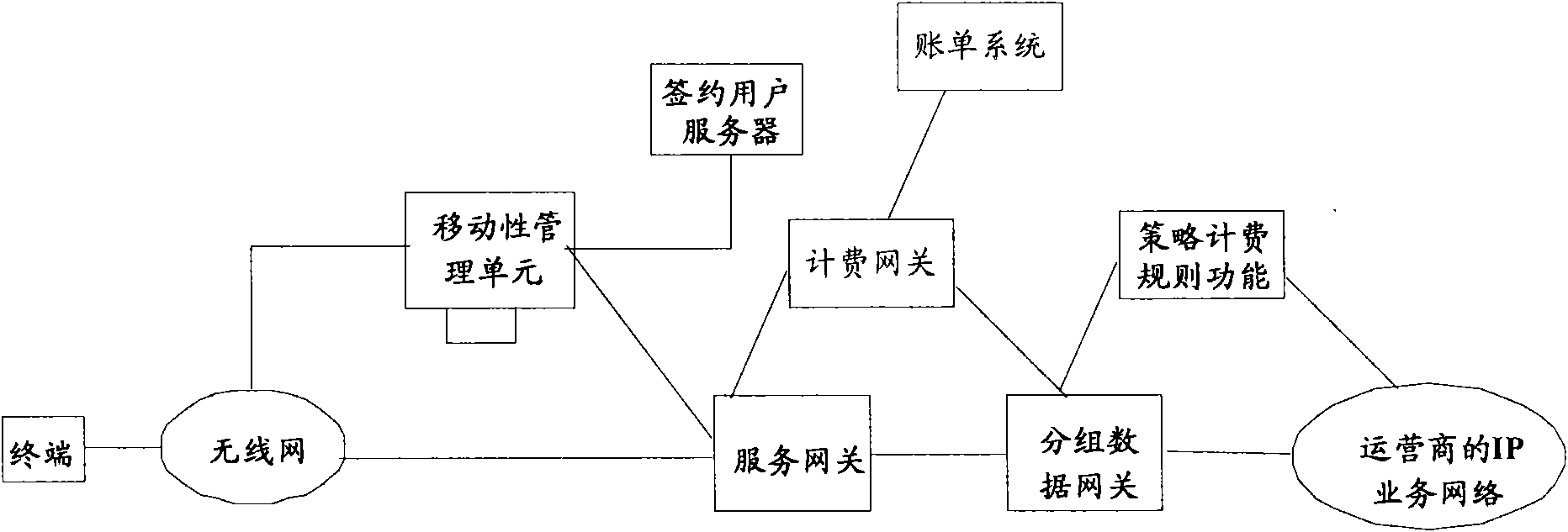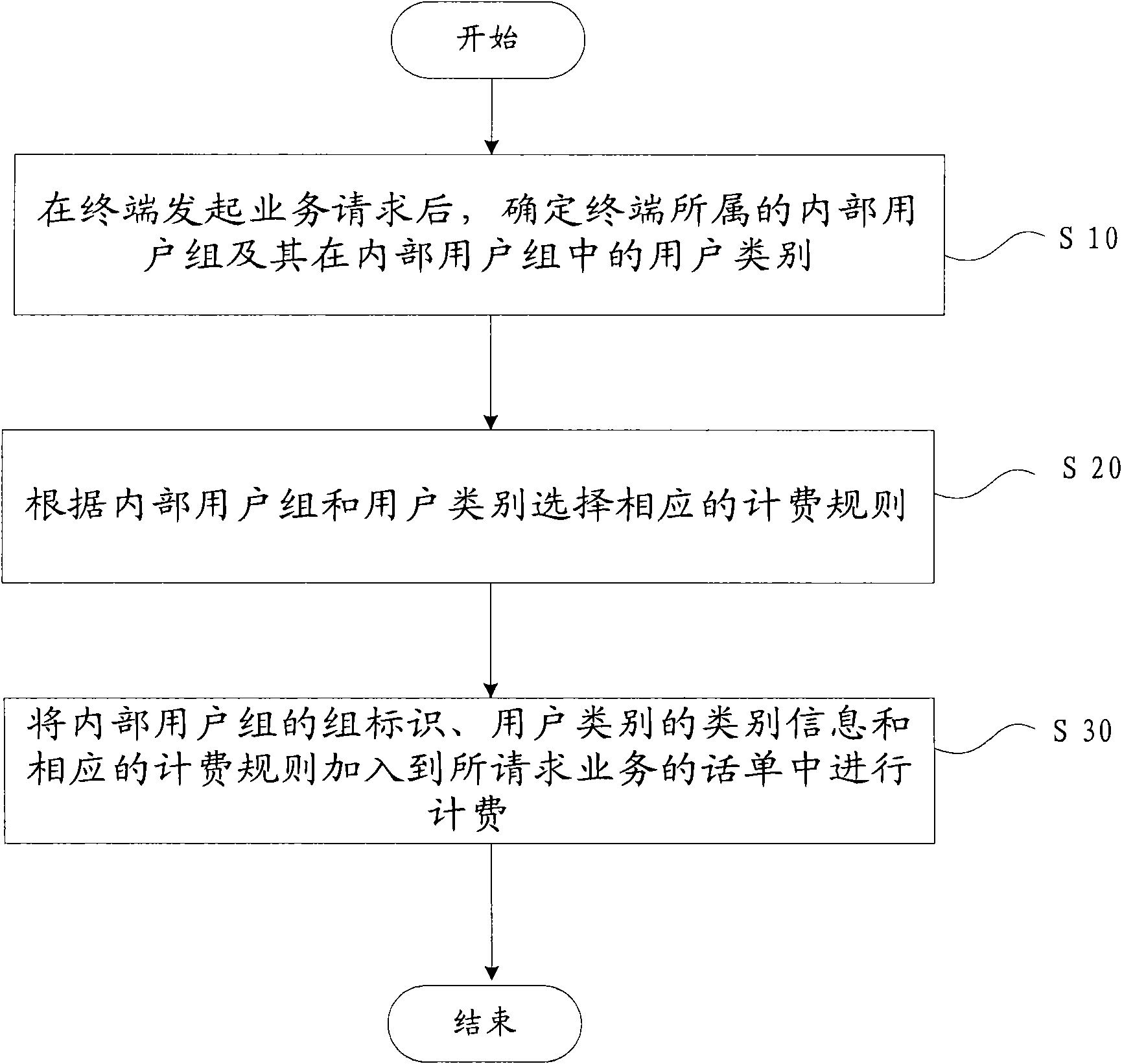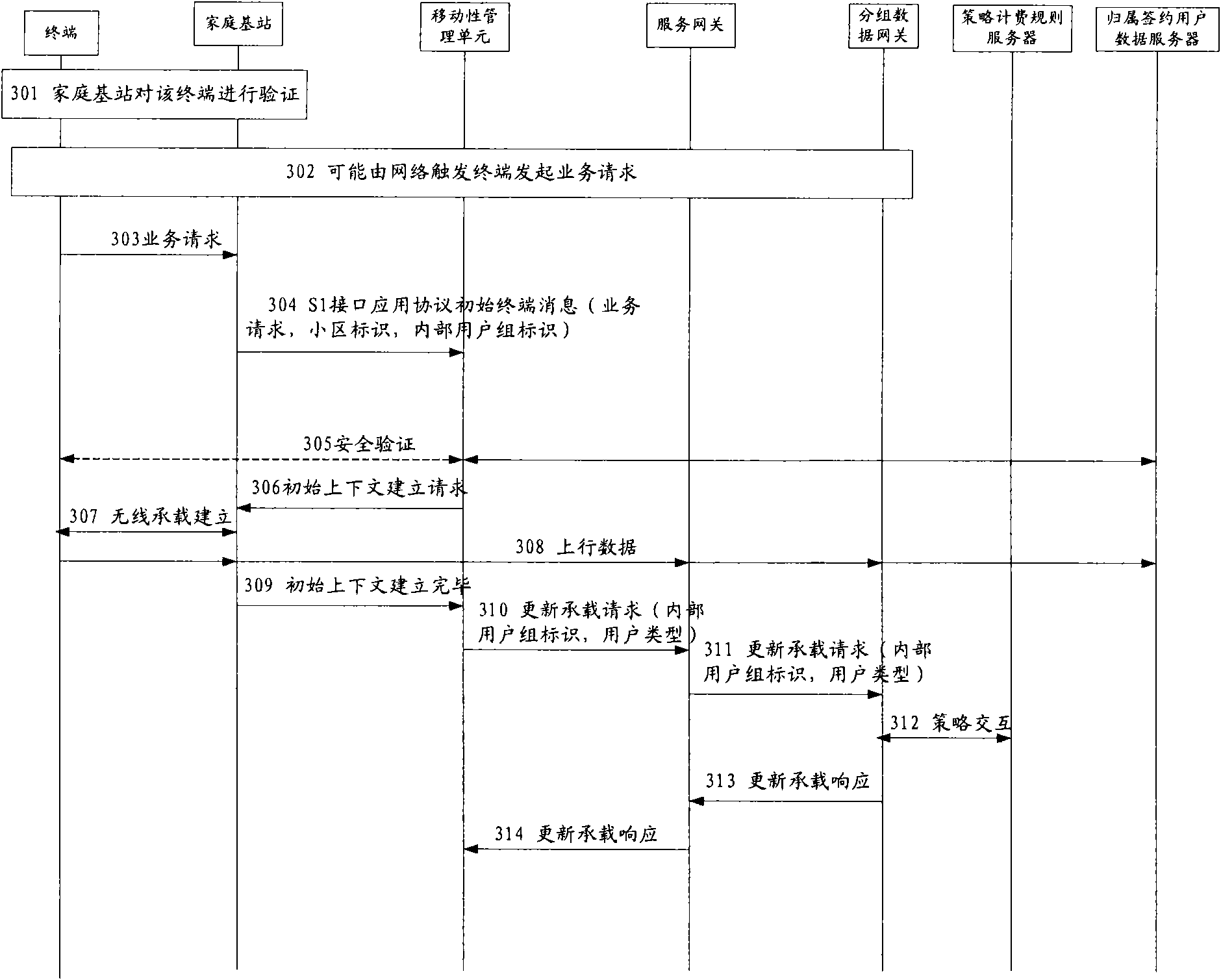Charging method and system for distinguishing user charging rules
A technology of rules and user categories, applied in the field of communication, can solve the problem of inability to differentiate billing, and achieve the effect of flexible and accurate billing
- Summary
- Abstract
- Description
- Claims
- Application Information
AI Technical Summary
Problems solved by technology
Method used
Image
Examples
Embodiment 1
[0080] image 3 It shows a signaling flow chart of a service request process for distinguishing user categories according to Embodiment 1 of the present invention, specifically including the following steps:
[0081] Step 301, after the terminal accesses the home base station, the home base station will perform a verification process on the terminal, and determine the identity of the terminal by comparing the terminal's identity with the list of internal user groups; at this time, the home base station knows the internal user group the terminal is in identification and user category (e.g. owner or guest);
[0082] Step 302, the network may send a terminal under the home base station due to downlink data or signaling, and trigger the terminal to initiate a service request process by paging the terminal. There is no signaling connection and it is in an idle state. At this time, the terminal initiates a service request process.
[0083] Step 303, the terminal sends a service re...
Embodiment 2
[0098] Figure 4 It shows a signaling flow chart of handover when both the mobility management unit and the serving gateway are unchanged according to Embodiment 2 of the present invention. When this process occurs, both the serving gateway and the mobility management unit of the terminal remain unchanged, and the mobility management unit needs to update the internal user group identifier and user type information to the serving gateway. The specific steps involved are as follows:
[0099] Step 401 , when the terminal is in the connected state, if it enters the destination HNB cell from the source BTS cell, it initiates a handover process and accesses the HNB cell.
[0100] Step 402, if the source base station is a macro base station, the destination HNB triggers the terminal to initiate a tracking area update process through air interface signaling.
[0101] In step 403, the terminal sends a tracking area update request message to the mobility management unit, and the messa...
Embodiment 5
[0107] Step 408, the packet data gateway sends an update bearer response message to the serving gateway.
[0108] Step 409, the serving gateway sends an update bearer response message to the mobility management unit.
[0109] Step 410, the evolved system and the terminal complete subsequent tracking area update procedures.
[0110] The above process provides a handover process from a non-HNB cell to a HNB cell, mainly for the service gateway and the packet data gateway to know the internal user group and user type of the HNB cell.
[0111] This embodiment may also be used in a scenario where a terminal is handed over from a home base station of an internal user group to a home base station of another internal user group.
[0112] If the terminal is handed over from the home base station to the macro base station, then the core network will send the tracking area identifier to the serving gateway and the packet data gateway in the above steps 405 and 406 in the subsequent trac...
PUM
 Login to View More
Login to View More Abstract
Description
Claims
Application Information
 Login to View More
Login to View More - R&D
- Intellectual Property
- Life Sciences
- Materials
- Tech Scout
- Unparalleled Data Quality
- Higher Quality Content
- 60% Fewer Hallucinations
Browse by: Latest US Patents, China's latest patents, Technical Efficacy Thesaurus, Application Domain, Technology Topic, Popular Technical Reports.
© 2025 PatSnap. All rights reserved.Legal|Privacy policy|Modern Slavery Act Transparency Statement|Sitemap|About US| Contact US: help@patsnap.com



